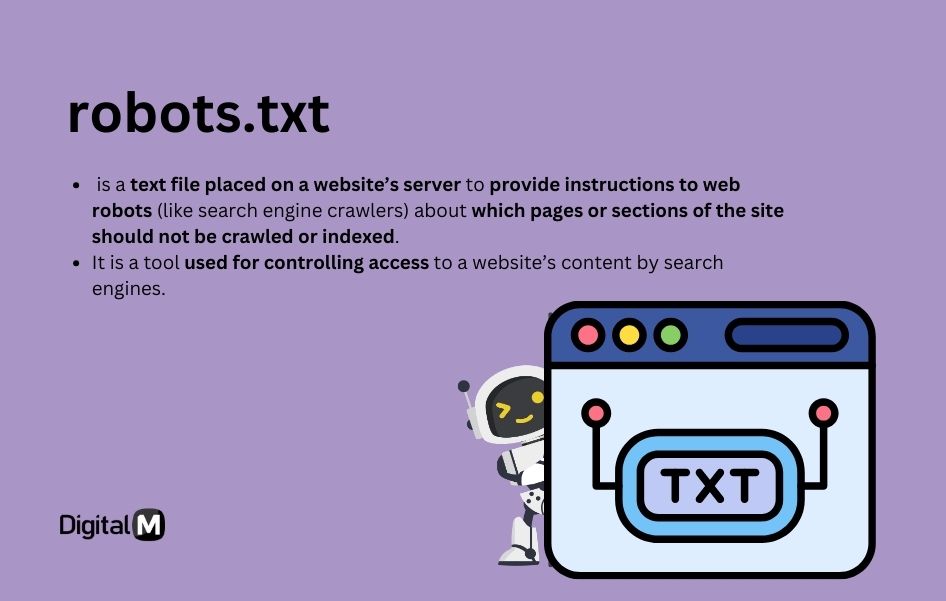Robots.txt
The robots.txt file is a text file placed on a website’s server to provide instructions to web robots (like search engine crawlers) about which pages or sections of the site should not be crawled or indexed. It is a tool used for controlling access to a website’s content by search engines.
Think of the robots.txt file as a signpost that tells search engines which parts of a website they’re allowed to explore and index and which parts they should ignore.

Key Points:
Crawling Instructions: It contains directives that guide web crawlers on which pages or directories they are allowed or not allowed to crawl.
Location: The robots.txt file is typically located in the root directory of a website (e.g., www.example.com/robots.txt).
Common Directives:
User-agent: Specifies the web crawler or user agent to which the rules apply (e.g., Googlebot).
Disallow: Indicates the URLs or directories that should not be crawled.
Allow: Permits crawling of specific URLs within a disallowed directory.
Example robots.txt File:
User-agent: *
Disallow: /private/
Allow: /public/
Purpose:
Crawl Efficiency: It helps search engines focus on relevant and valuable content, improving crawl efficiency.
Privacy: Prevents the indexing of private or sensitive information that shouldn’t be exposed in search results.
Testing and Verification:
Webmasters and SEO professionals can use tools provided by search engines to test and verify the correctness of their robots.txt files.
Caution:
Incorrectly configured robots.txt files can unintentionally block search engines from accessing important content, leading to SEO issues.
Example Scenario:
If there is a directory on a website containing personal user data that should not be indexed, the robots.txt file can include a “Disallow” directive for that directory.
Why it Matters:
Search Engine Optimization: Proper use of robots.txt helps control how search engines index a website, ensuring that only relevant content is considered for search results.
Privacy and Security: It can be a tool to protect sensitive information by preventing its exposure in search engine results.
Crawl Budget Management: Efficiently guiding web crawlers with robots.txt can help manage a website’s crawl budget, ensuring that important pages are crawled more frequently.
Also read: Robots.txt Introduction and Guide | Google Search Central
In summary, the robots.txt file is a text file placed on a website’s server to provide instructions to search engine crawlers regarding which pages or sections of the site should or should not be crawled and indexed. It is a valuable tool for SEO and privacy management.

